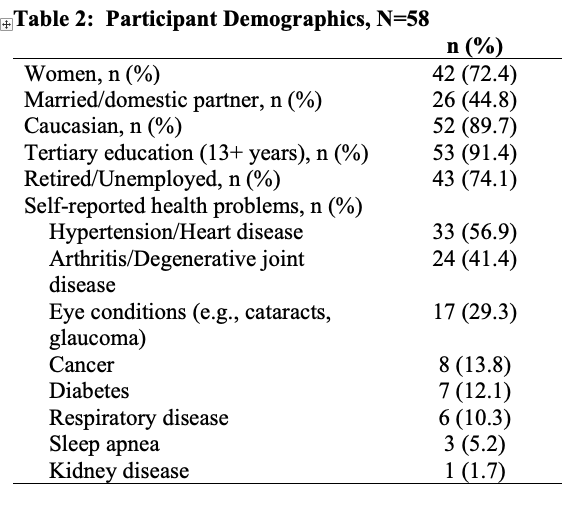Perceptions of the Eight Active Ingredients of Tai Chi Exercise among Older Adults
Keywords:
perceptions, reliability, Tai chi, validity, psychometrics, questionnaireAbstract
Background
In the United States, Tai Chi has been endorsed as a safe form of exercise among older adults by several national non-profit organizations, and scientific research sponsored by various branches of the federal government. Tai Chi is associated with physical, cognitive, and psychological benefits among older adults. The distinct components, interactions, and complexities of Tai Chi exercise distinguish it from traditional forms of aerobic exercise. Eight ‘active ingredients’ of Tai Chi practice are purported, yet the perceptions of these active ingredients among older Tai Chi practitioners have yet to be ascertained.
Methods
Data were collected as part of a cross-sectional study exploring the association between Tai Chi exercise and automobile driving among older adults. Perceptions of the Eight Active Ingredients of Tai Chi: 1) awareness, 2) intention, 3) structural integration, 4) active relaxation, 5) strengthening and flexibility, 6) natural, freer breathing, 7) social support, and 8) embodied spirituality were assessed using a self-reported measure. This 8-item measure asks an individual about their level of agreement with statements about the active ingredients associated with Tai Chi practice, using a four-point Likert format (1=strongly disagree, 4=strongly agree), with higher scores representing greater agreement (possible range 8-32).
Results
Participants (N=58) were on average 73 years old (range=65-87 years old), mainly retired (72%) Caucasian women (72%), practicing Tai Chi in diverse community classes. This measure had a normal distribution, internal consistency rates were high (Cronbach’s alpha=0.81) with all items correlating significantly with the total mean score (r=0.43-0.76, p=0.01). Among the long-term Tai Chi practitioners higher mean scores were reported (27.8±2.6), compared to the intermediate (25.7±2.9) and beginner (24.4±3.2) groups. Statistically significant differences were found in the mean scores between the long-term Tai Chi practitioners and the intermediate group (mean difference=2.1, SE=0.8, 95% CI=0.16-3.99, p=0.05), as well as the mean scores between the long-term Tai Chi practitioners and the beginner group (mean difference=3.3, SE=1.2, 95% CI=0.55-6.14, p=0.05); providing initial evidence of known-groups validity.
Conclusions
The Perceptions of the Eight Active Ingredients of Tai Chi measure is an initial step to understand the perceptions of the active ingredients of Tai Chi exercise. This measure had a normal distribution, high internal consistency and known-groups validity. Assessing and defining the active ingredients of Tai Chi exercise are important for: understanding the mechanisms of action, bridging the gaps between Eastern and Western ways of knowing, developing a common language and framework for researchers to compare study results, and tailoring Tai Chi interventions to fit specific populations.

Published
How to Cite
Issue
Section
Copyright (c) 2021 Sally Miller, Ruth Taylor-Piliae

This work is licensed under a Creative Commons Attribution-NonCommercial-NoDerivatives 4.0 International License.

